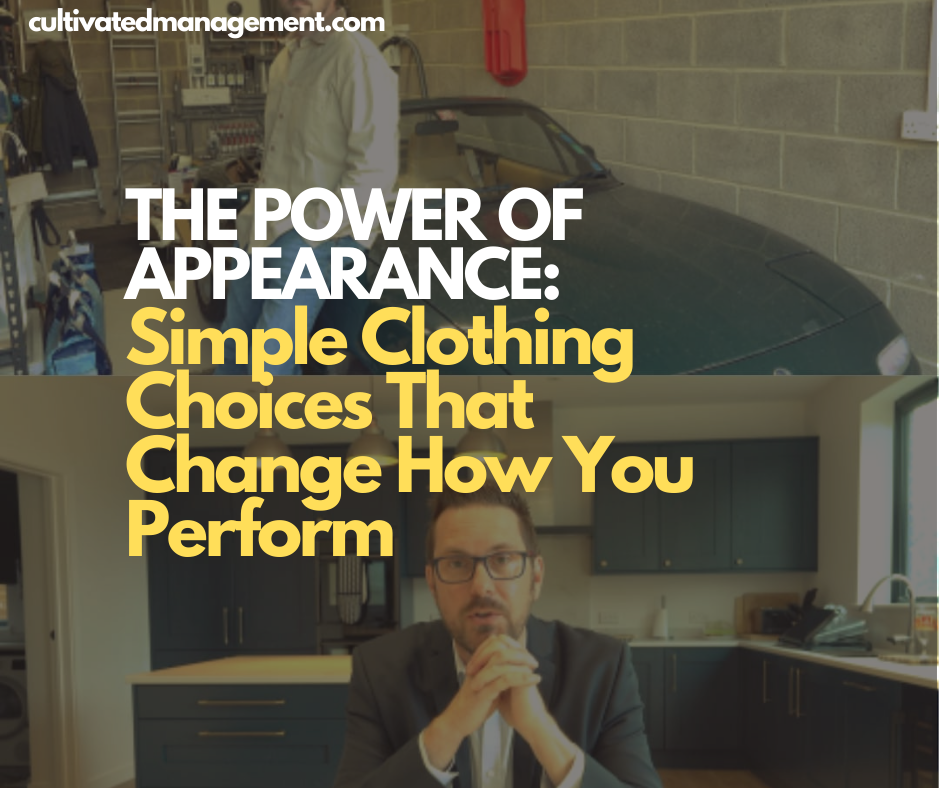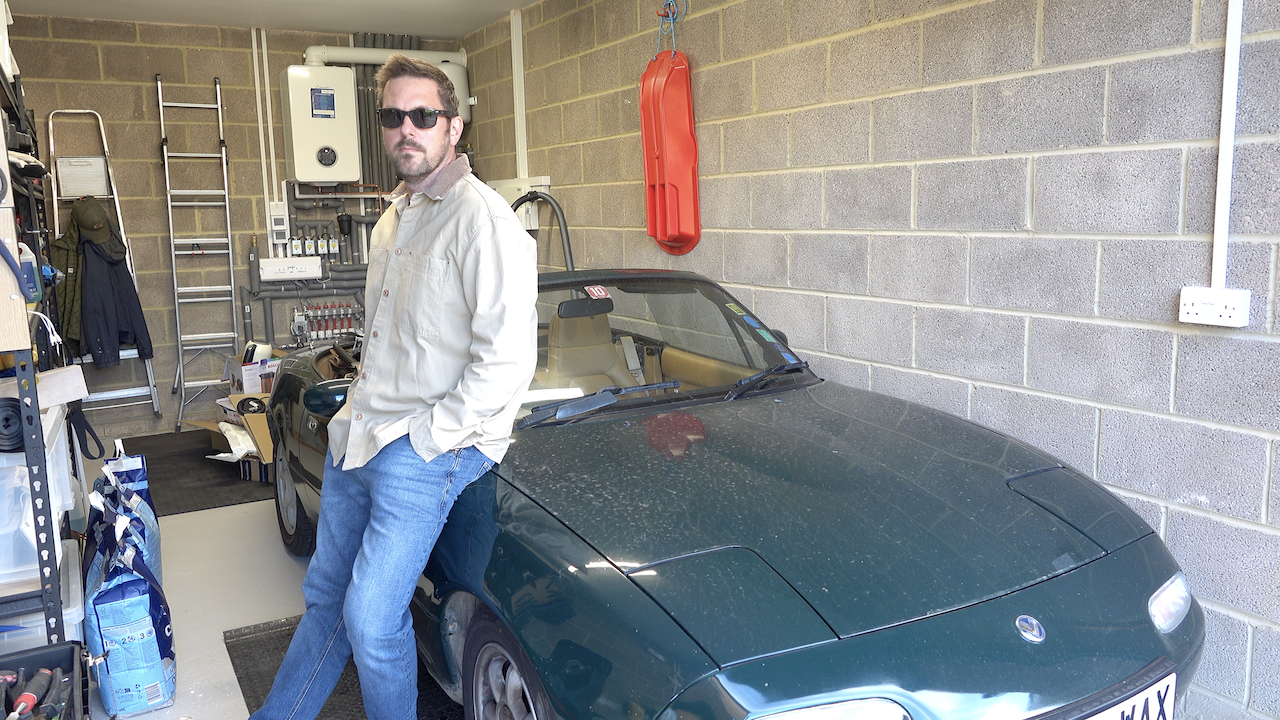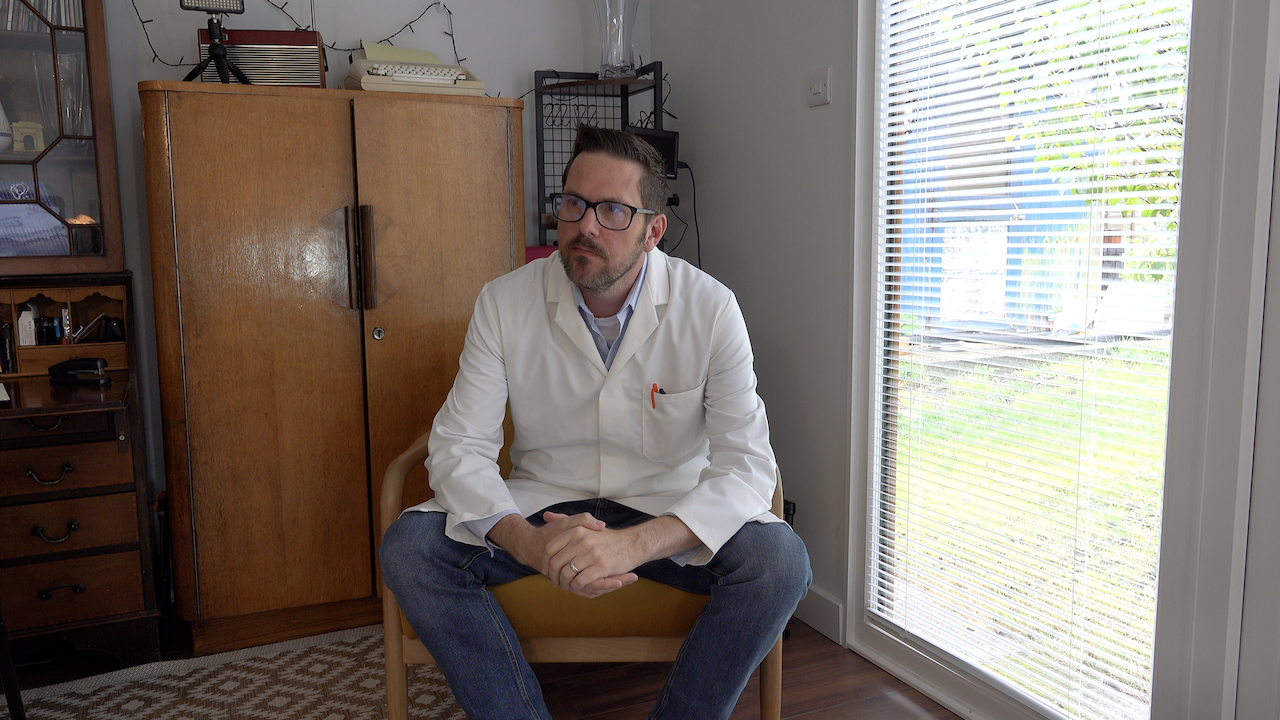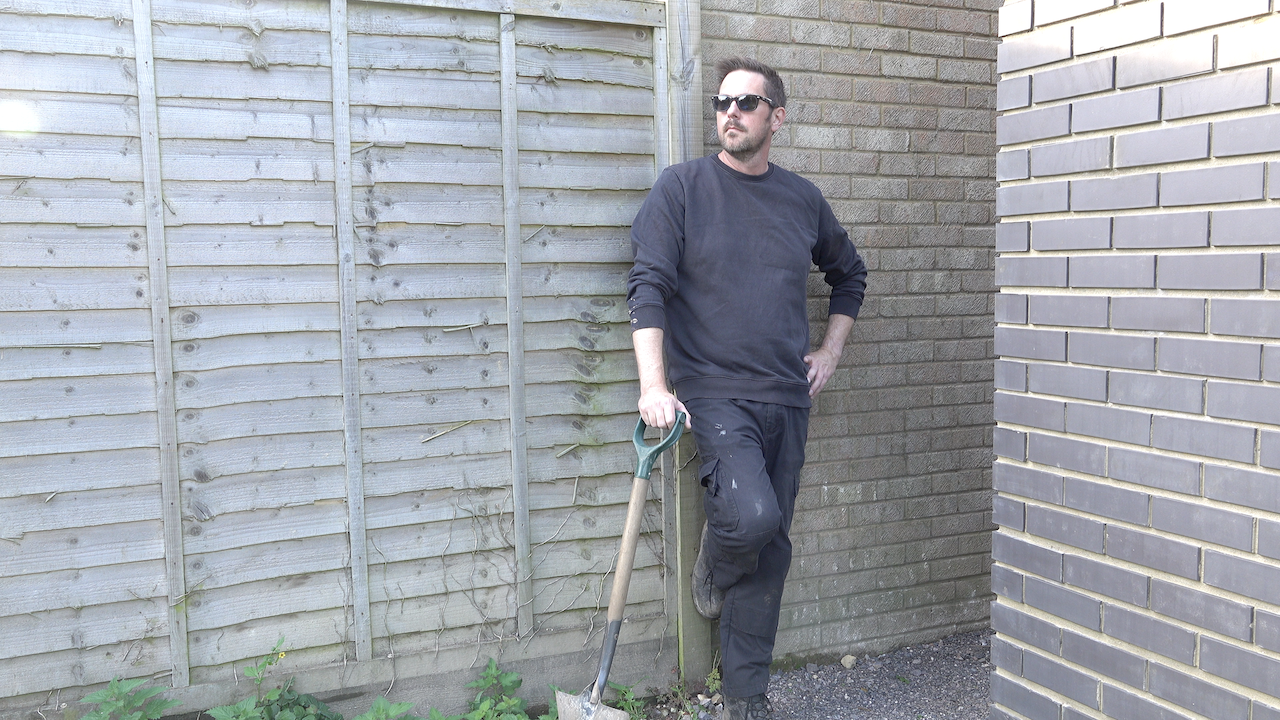The Power of Appearance: Simple Clothing Choices That Change How You Perform
Clothing doesn’t just influence how others see you—it changes how you perform. Discover the psychology and science of appearance, first impressions, and why having the right “uniform” can help you show up with more confidence, focus, and authority.

In this article (and video), I’m going to share some fascinating scientific research about the power of clothing — and why appearance matters more than we like to admit.
Not just in how others perceive us, but in how we perform ourselves.
We may not want to believe it, but appearance influences us. It shapes how people respond to us, how we see ourselves, and even how well we perform tasks.
Watch the video, listen to the podcast, or scroll down for the full article and references.
Video:
Podcast:
As with most things in communication, there are competing theories, models and research studies. What I’m sharing here isn’t absolute advice — it’s insight. Think of it as an invitation to experiment.
We’ll look at two key areas:
- How clothing shapes the first impressions we make on others.
- How clothing influences our own confidence, focus and performance.
Both matter more than we think.
First Impressions: Communication Without Words
We all know first impressions count. What’s less obvious is how much of that impression is made without us saying a single word.
Clothes, posture, facial expressions — all of them communicate. They send signals whether we intend them to or not.
Whenever I run communication workshops, I come back to the same principle:
- All communication has a purpose, an audience, and a context.
Clothing is no different. The shirt, jacket, or trainers you put on in the morning are signals that people decode based on social rules, cultural expectations, and personal bias.
It’s why we don’t wear jogging bottoms to a wedding. It’s why you probably wouldn’t turn up to a BBQ in a three-piece suit. Context sets the rules.
And within those rules, clothing speaks volumes – whether we want it to or not.
Smart vs Casual: The Psychology of Perception
Researchers studied how people perceived others based on clothing styles: professional, trendy, or casual.
- Professional clothing was consistently linked with confidence, intelligence and success.
- Casual or trendy clothing didn’t score as high on status, but people judged those wearers as friendlier and more exciting.
(Angerosa, n.d.)
The study had flaws — it used students, for example — but the results echo wider research.
Another study looked at salespeople. Those dressed more professionally were seen not just as better educated and more ambitious, but even their products were rated as higher quality and more ethical. (Stuart and Fuller, 1991)
The finding was clear: it’s the overall ensemble that matters, not just one item.
That’s why, when I put on a suit, it changes more than just my look. It changes how people engage with me — and, as we’ll see later, how I engage with myself.
Confidence, Expression and What’s Beyond Our Control
Two important things to keep in mind:
- Clothing builds self-confidence. Research shows our clothing choices reflect who we are and can help us feel more assured. (University of Ljubljana et al., 2014)
- How others perceive us isn’t fully in our control. People decode signals through their own filters: social norms, expectations, and personal biases.
What we can do is match purpose, audience and context.
If you’re selling a product, dress more professionally. If you want to create a safe space for honest discussion, casual might work better.
Professional clothing conveys competence and trust. Casual clothing conveys warmth and approachability. Both have their place.
But the golden rule: you must feel comfortable and authentic in what you wear. Clothes are an extension of self-expression. If you feel fake in your outfit, it will show.

Beyond First Impressions: Clothing and Performance
Here’s where things get interesting. Clothing doesn’t just shape how others see us. It shapes how we perform.
Felt Power
Research found that people dressed more formally experienced an increase in “felt power.” (Slepian et al., 2015)
That inner sense of authority helped them focus and perform better on tasks.
I’ve noticed this in my own work. When I deliver a keynote or run a workshop, I dress more formally — not to impress others, but because I perform better. I feel sharper. More in control. More professional.
My trusty presentation blazer isn’t just fabric. It’s a psychological trigger for me to do my best work.
My book Zero to Keynote is now out in print and digital. It’s a step-by-step guide to speaking at conferences—from sparking ideas and submitting proposals to crafting your talk, rehearsing, and delivering a presentation that stands out.
Enclothed Cognition: The Symbolism of Clothing
One study asked participants to wear a lab coat. When told it was a scientist’s coat, they performed tasks with greater focus. When told it was a painter’s coat, performance didn’t improve. (Adam and Galinsky, 2012)
The lesson? It’s not just the clothing. It’s the symbolic meaning we attach to it.
For the effect to work:
- The clothing must carry symbolic meaning.
- You must wear it.
That’s why uniforms are powerful. They prime the mind for the role.
I’ve tested this myself.
- Public speaking: I always wear the same blazer I first wore when my Communication SuperPower workshop won “best tutorial.” It’s now a symbolic piece of clothing that puts me in high-performance mode.
- Driving: I have a “driving outfit” — jacket, jeans, Converse trainers. It feels right and sharpens my focus behind the wheel.
- DIY: I wear Dickies work trousers, steel-toe boots and an old Sainsbury's jumper. It signals “work mode.”
- Fitness: Gym clothes mean “no excuses.”
- Cooking: Apron on, attention sharpens – makes my kids laugh.
- Sales and business development: More formal wear. It helps me show up with authority—and others perceive me as more trustworthy.
- Journaling – a lab coat. Just joking.
Each outfit is a cue. A trigger for focus and performance.




Practical Takeaways: Dressing With Purpose
Here are three practical lessons from the research and stories:
- First impressions matter, but they’re contextual.
Dress to match your purpose, audience and environment. If in doubt, lean slightly more formal — it conveys competence. - Use clothing as a tool for self-confidence.
Wear clothes that feel authentic. Confidence comes from alignment, not from trying to be someone you’re not. - Create symbolic uniforms for important activities.
Assign specific outfits to tasks you want to perform well. Over time, they become triggers for focus and flow.
The Bigger Picture
We often dismiss clothing as superficial. But science suggests it runs deeper.
- Clothes shape first impressions: how others see us and our credibility.
- Clothes shape self-perception: how powerful and confident we feel.
- Clothes shape performance: how focused we are and how well we execute tasks.
It’s not about fashion. It’s about psychology.
So next time you’re preparing for an interview, a presentation, a workout, or even just a tough day at work — ask yourself:
What outfit gives me the best chance of showing up at my best?
For me, that answer changes with the task. A blazer for a keynote. Trainers for driving. Dickies trousers for DIY.
For you, it might be different. But the principle is the same: dress with purpose.
Final Word
First impressions matter. Performance matters. Confidence matters.
And the clothes you choose are a lever you can pull in all three.
Experiment with your own “uniforms.” Pay attention to how they make you feel and perform.
Dress to impress, yes — but more importantly, dress to express, and dress to perform.
Bibliography
https://doi.org/10.1016/j.jesp.2012.02.008
https://doi.org/10.1177/1948550615579462
https://doi.org/10.1016/0148-2963(91)90034-U


